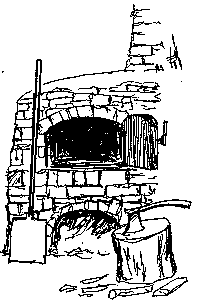Records have shown ovens in 4300 BC Bulgaria, early Roman times, in Peru, Turkey, Spain, France and parts of Asia. The earliest remains of ovens were found in the eastern half of the Mediterranean Basin from the second millennium BC. They were a squat clay mound, beehive in shape, with internal shelving and an opening in the base for ash removal, they were principally used to bake bread. The consequences of Spanish invasions and colonization ensured the progressive use of this new technology throughout Europe and Asia.
European villages tended to have a limited number of ovens in the centre of the village for communal use. The old village ovens were usually built into a small building that resembled a chapel, placed near the well, the church and the wash house. The early European families cooked bread, casseroles, sweet and savoury pies, roasts and cakes. They were a popular gathering and gossiping spot for the town and a meeting place in the evening for courting couples.









